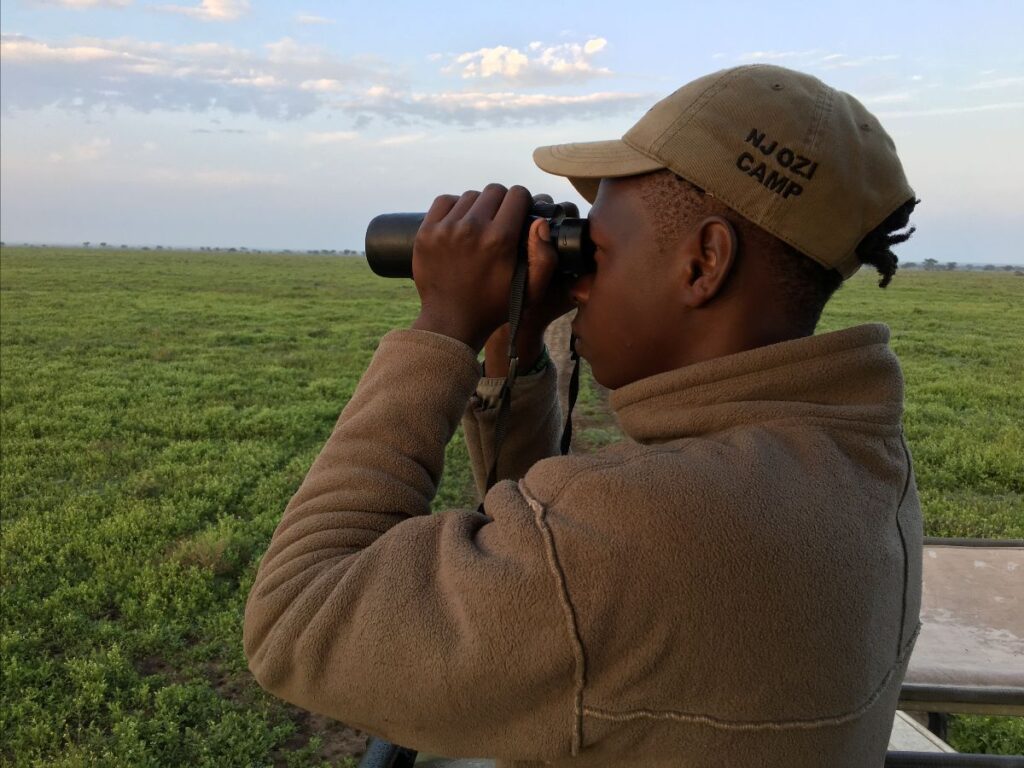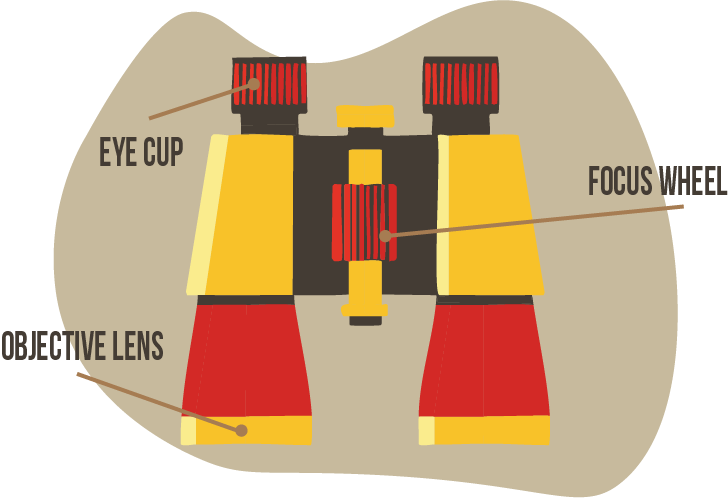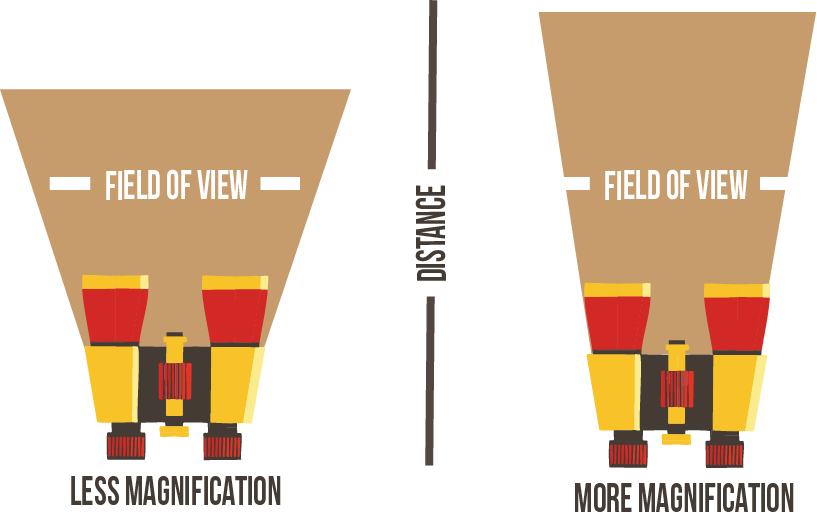By Katt Hendershot, Operations Specialist for The Wild Source
After reading through dozens of packing lists, you’ve decided to bring your own binoculars on safari and started researching what to buy, but the world of binoculars feels like a foreign language. This surface-level guide will break down the essential terms and features you need to know without getting lost in the weeds.
Do I Actually Need Binoculars on Safari?
While your guide will have a pair of binoculars that they can share, they’ll mainly be using them to spot wildlife for the group. When an incredible sighting happens, you won’t want to be stuck waiting your turn or competing with other travelers for a closer look. Though you’ll be able to see wildlife up close, it’s a good idea to have your own pair to maximize your wildlife viewing experience!

Binocular Specs
When looking at binoculars, the first set of numbers is usually something like 8×42, 6×30, etc. These numbers reference the magnification power and the objective lens diameter of the binoculars
Magnification Power
Magnification power is the first number (e.g., the “8” in 8×42) and refers to the degree to which an object is magnified when viewed through the binoculars. For safari, we recommend choosing binoculars with a magnification power of 8 or 10. 8-power binoculars will appear 8 times closer and provide a wider field of view as opposed to 10-power binoculars, which will appear 10 times closer and provide a more detailed view. There are benefits and disadvantages to both. At first, it seems like a more detailed view at 10 times would be the better option, but that same benefit can be a disadvantage, as the increased magnification power amplifies any unsteadiness in your hands when looking through them.
As previously mentioned, magnification power will impact your field of view. A narrower field of view will make viewing moving objects like birds flying or a cheetah on a hunt harder to follow. Choosing less magnification power will provide a larger field of view.

Objective Lens Diameter
Objective lens diameter is the second number (e.g., the “42” in 8×42) and refers to the diameter of the lens in millimeters. Like camera lenses, the larger the diameter of the lens, the more light can enter, meaning you get a brighter image. The objective lens size can also help you determine the size of binoculars, as the larger the diameter of the lens, the larger the pair of binoculars. For safari, we recommend an objective lens diameter of 42mm, but if you are looking for something more compact, a diameter of 32mm is fine.
Keep in mind that a larger objective lens usually means bigger and heavier binoculars. This is especially important if you’re flying on a bush plane with strict luggage weight limits.
Optical Quality
Optical quality in binoculars refers to how clear, sharp, and bright the image appears when you look through them. It depends on the type of glass, the quality of the prisms, and the lens coatings. Higher-quality optics reduce glare, improve color accuracy, and provide a sharper view, especially in low-light conditions.

Other Key Features
Eye Relief
If you wear glasses, we recommend choosing binoculars with eye relief of 11mm or more. Eye relief is the distance between the eyepiece and your eye while still allowing you to see the full field of view.
Protections
Binoculars are meant to be used outdoors, meaning they need to be able to withstand different elements. Binoculars can come with a variety of outer and inner protections to improve your binocular usage and keep it safe.
- Waterproof and weather-resistant binoculars can be a great option if you’re worried about the rain or plan on using them in a water-based activity.
- An outer rubber coating can help keep your binoculars protected in case of any bumps, drops, or scratches.
- Fog-proof binoculars are perfect for when you are moving between cold and warm environments.
Accessories
Binoculars often come with accessories, or they can be purchased separately. Cases are commonly included and provide added protection when your binoculars are stored in a bag. Neck straps keep them easily accessible during wildlife viewing or game drives, while harnesses serve a similar purpose but hold the binoculars closer to your body, offering improved stability and comfort.
Purchasing Binoculars
This guide provides a basic overview of binoculars. While there’s much more to explore, it’s meant to help you get started with your purchase or lay a foundation for further research.
Like any other piece of gear, it’s helpful to try out binoculars in person at a local outdoor retailer, even if you plan to buy them online. If there isn’t a specialty shop nearby, most stores that sell camping gear carry binoculars too. Testing them in person allows you to find what feels most comfortable and practical for you. Store staff can also help answer any detailed or technical questions you might have.
When testing binoculars, some outdoor retailers may provide a test chart. If not, simply look around the store to get a feel for them. If you know someone who owns binoculars, it can also be helpful to borrow and test different models outdoors. Pay attention to clarity, sharpness, brightness, field of view, weight, and size.